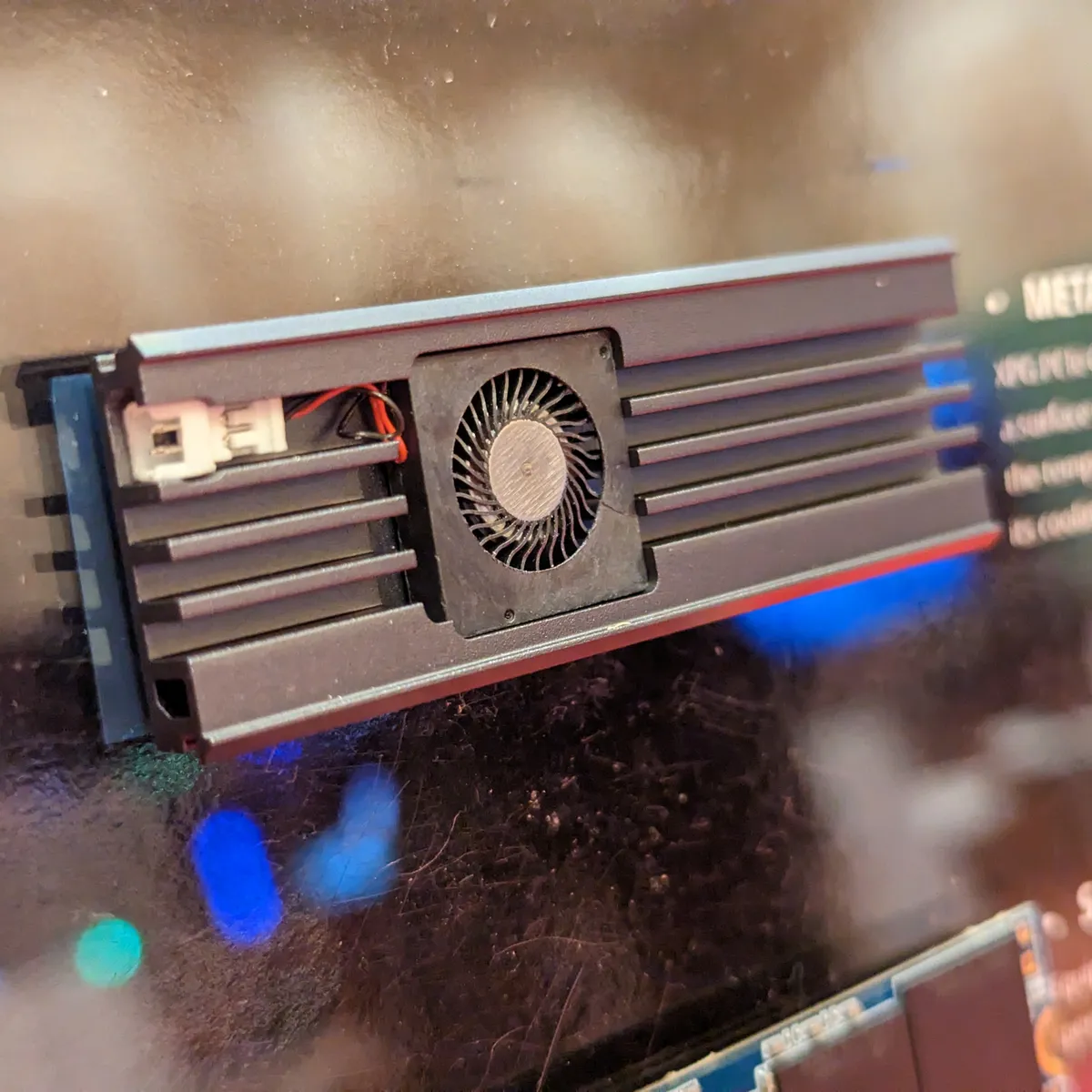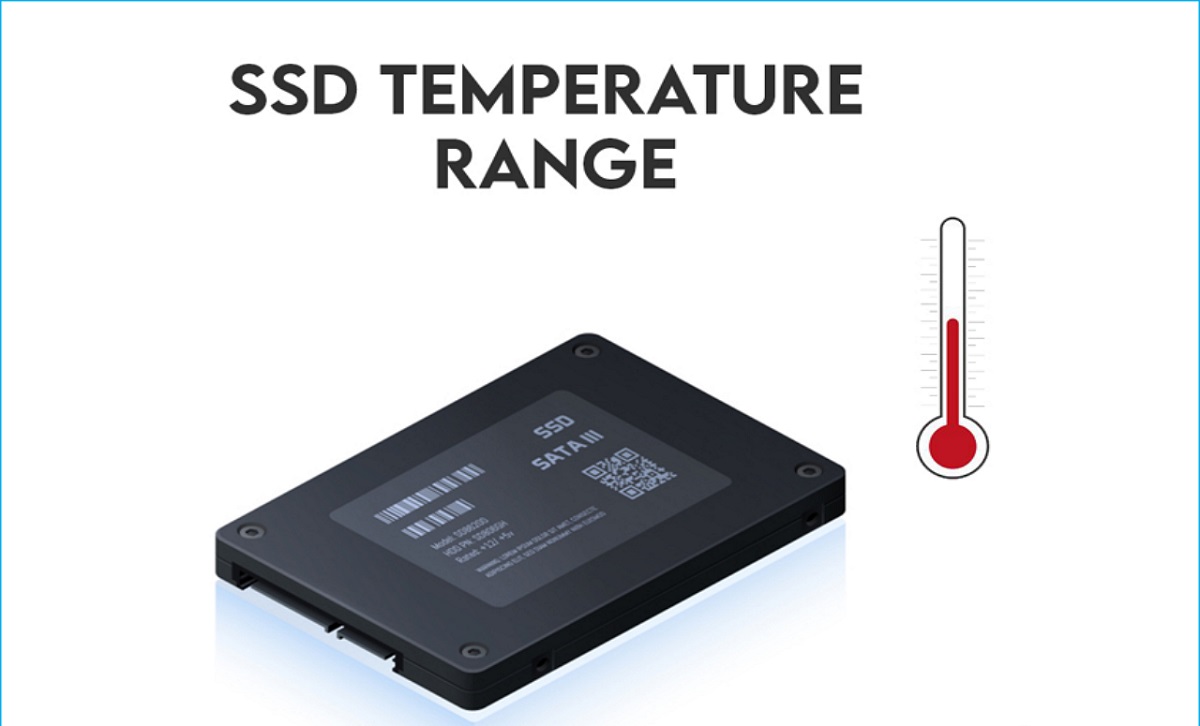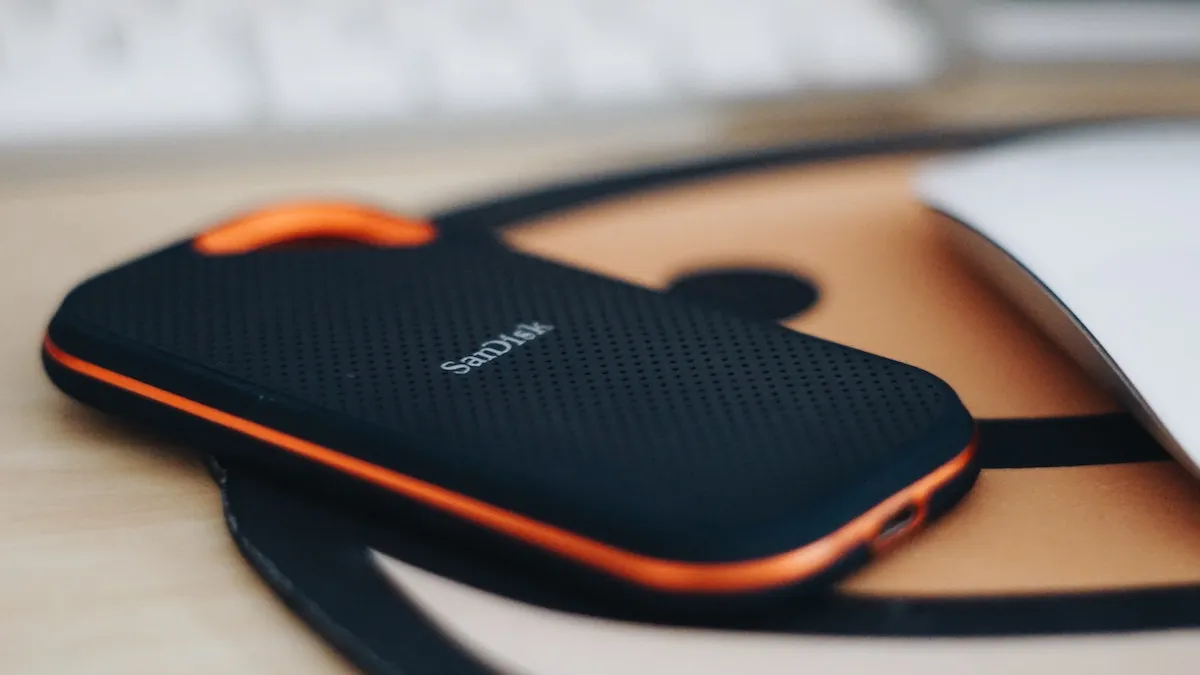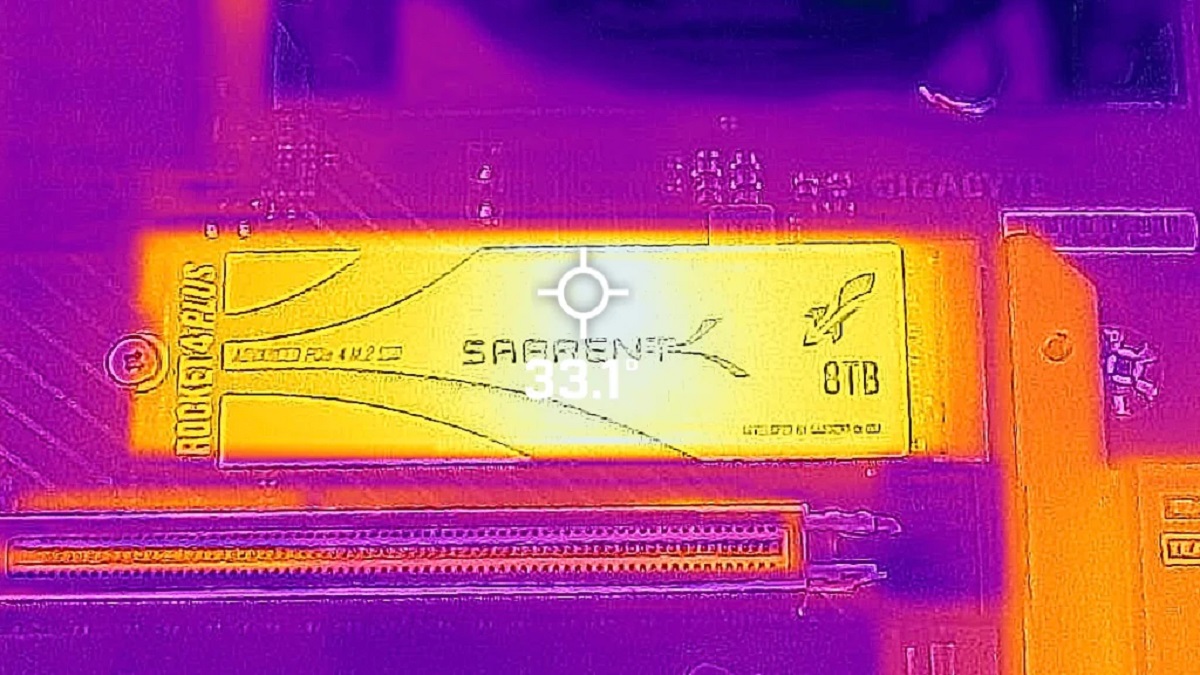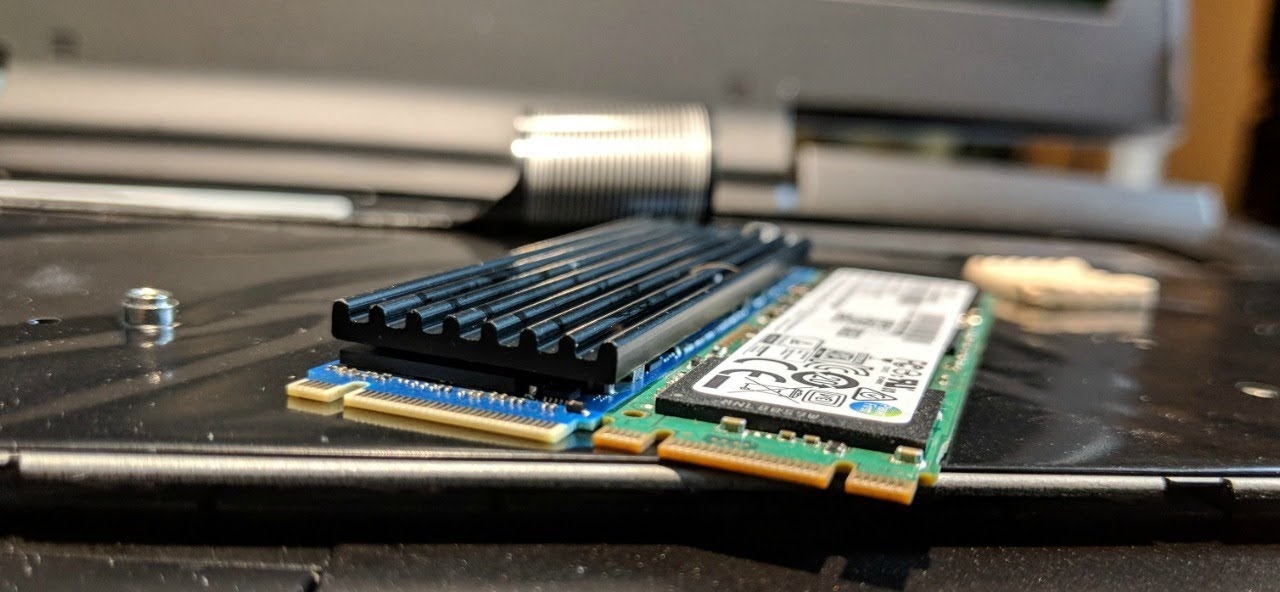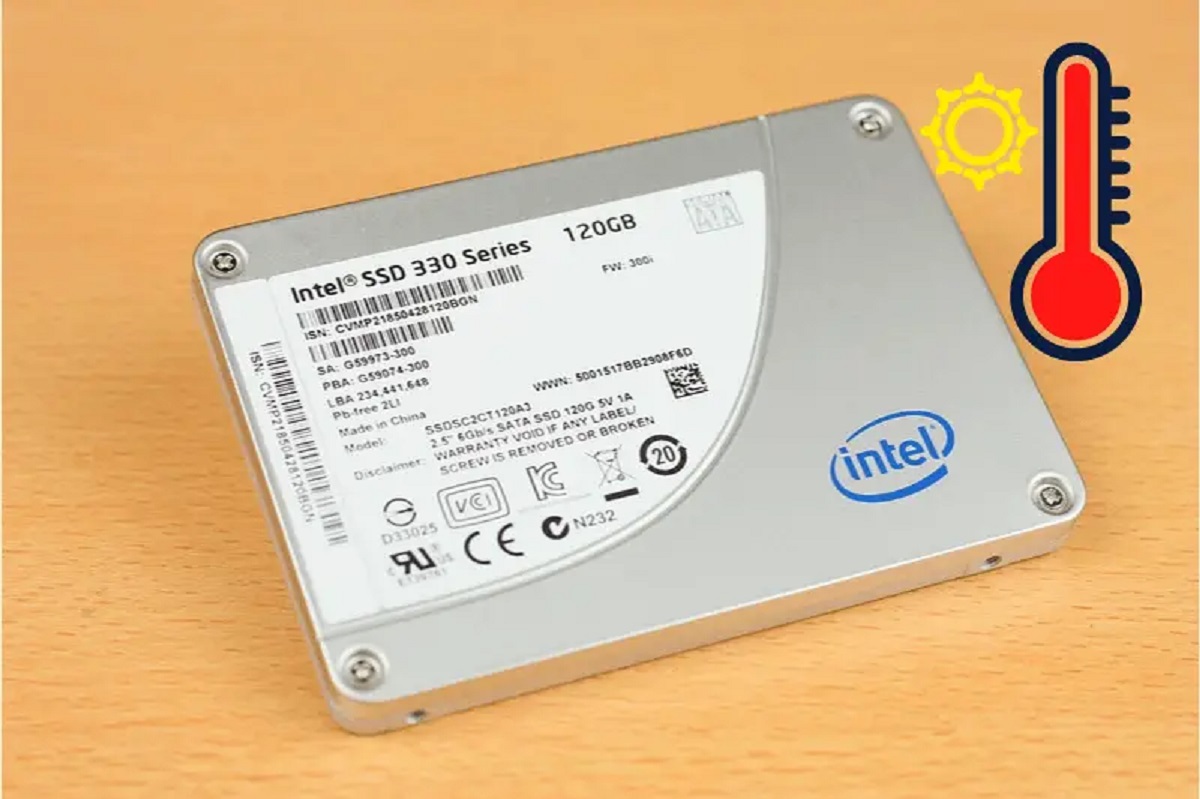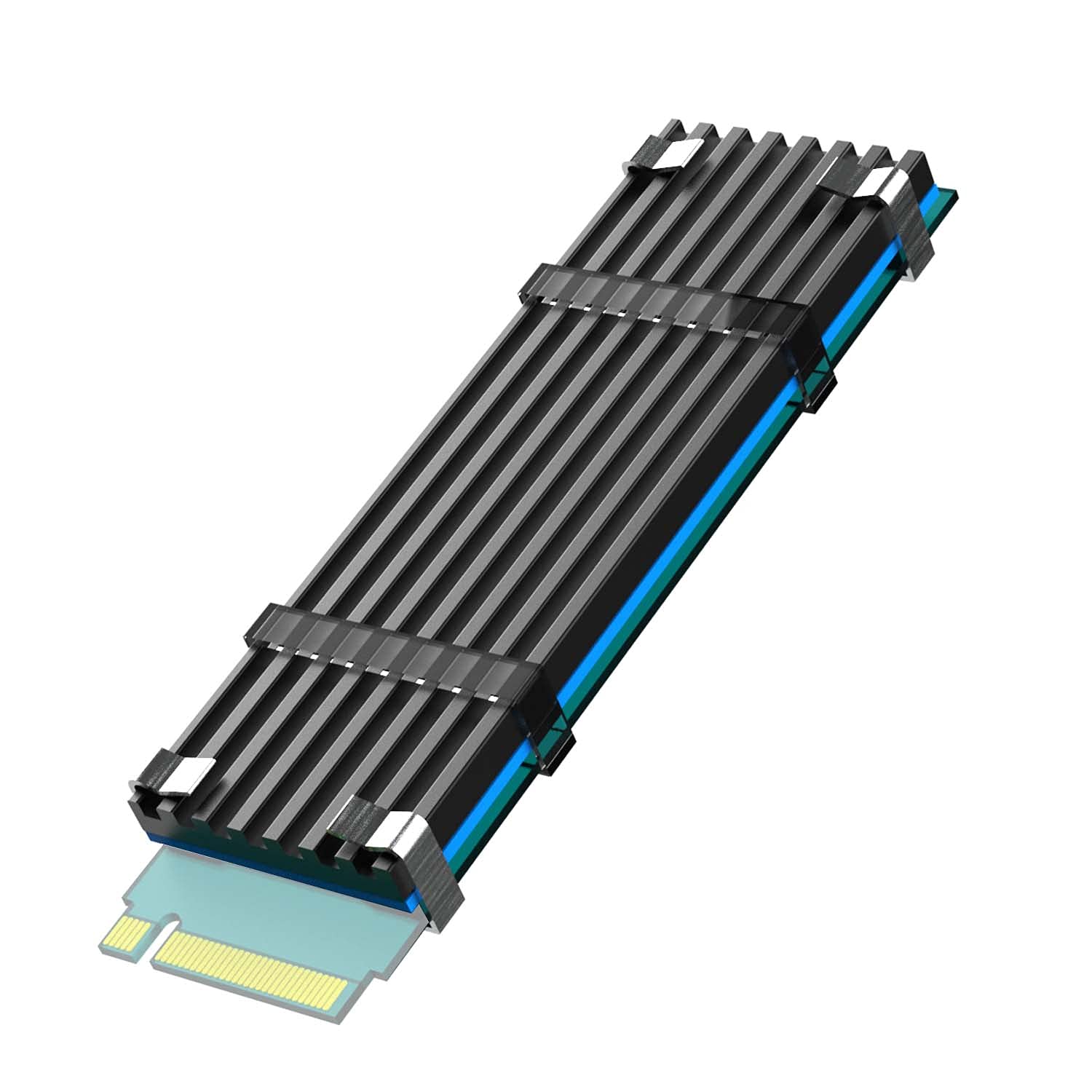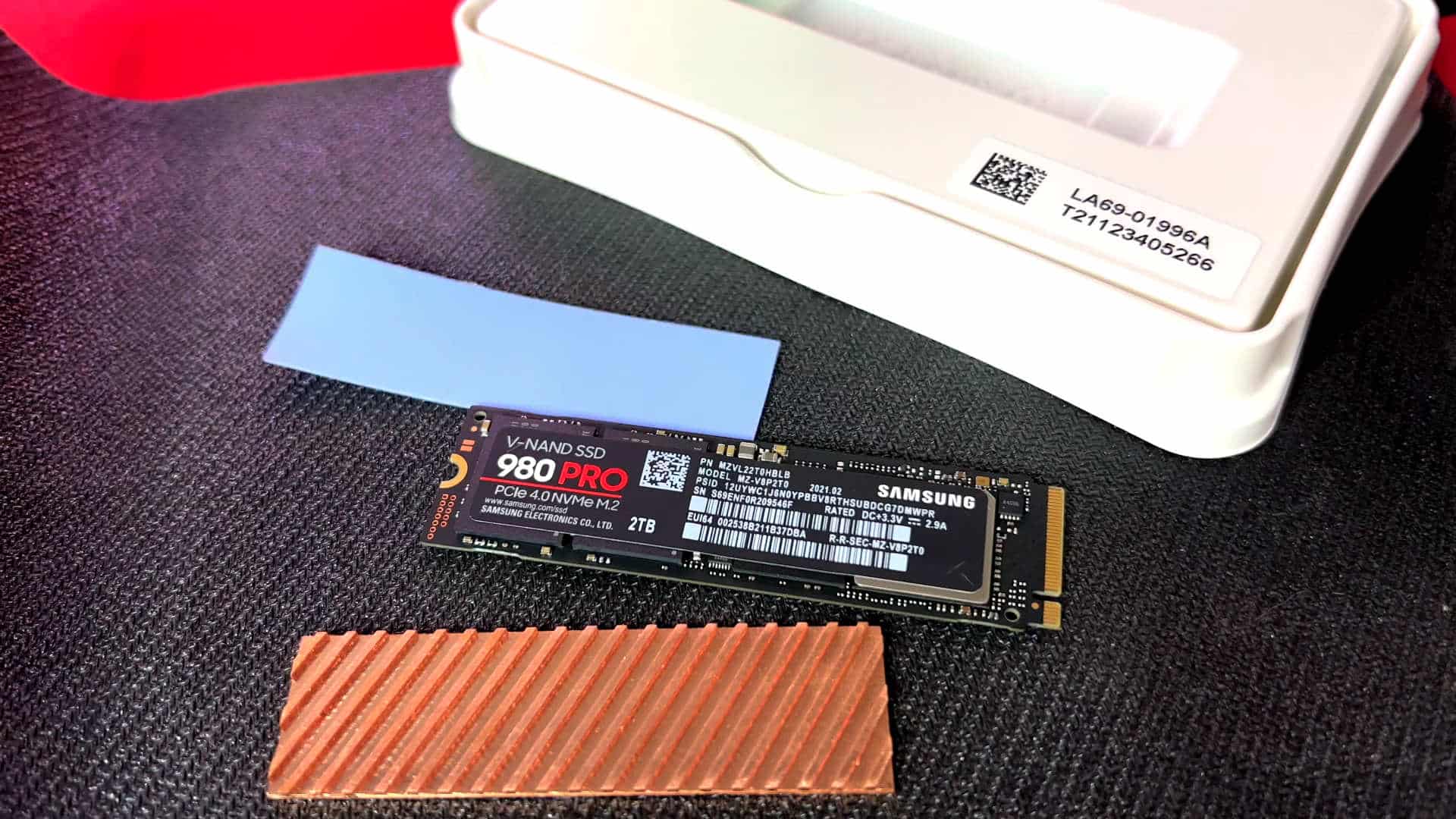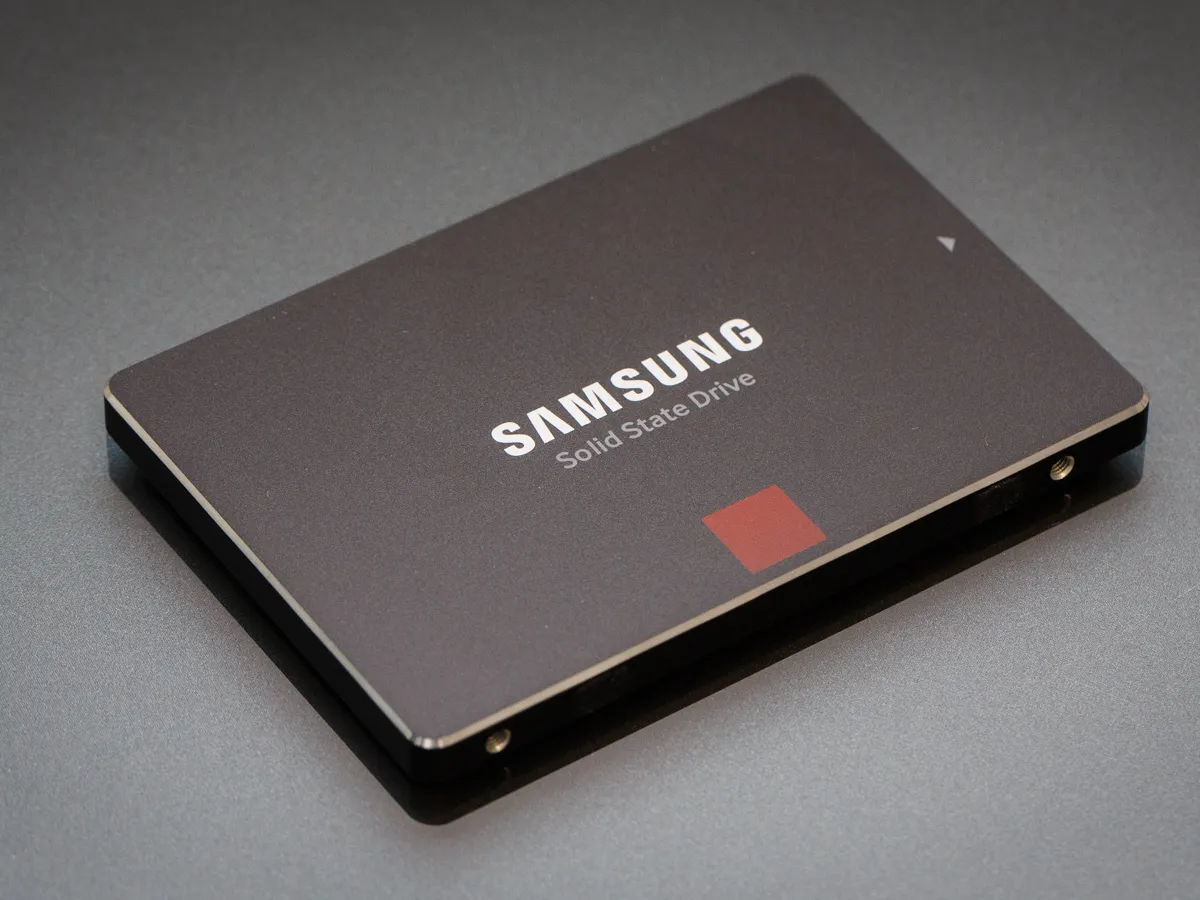Introduction
An SSD (Solid State Drive) is a popular storage device that offers faster data access and improved performance compared to traditional hard drives. As with any electronic device, SSDs generate heat during operation. While they are designed to withstand higher temperatures, excessive heat can lead to various issues, including reduced lifespan, decreased performance, and ultimately, data loss. Therefore, it is crucial to keep your SSD cool to ensure its longevity and optimal performance.
Heat is a natural byproduct of electronic components, and SSDs are no exception. However, unlike hard drives with spinning disks, SSDs rely on flash memory and do not have any moving parts. This makes them more resistant to physical wear and tear and provides faster data access. However, it also means that heat dissipation becomes a critical factor in maintaining their performance and reliability.
This article will discuss the importance of keeping your SSD cool, the factors that contribute to SSD overheating, the signs and symptoms of an overheating SSD, as well as useful tips and strategies to prevent SSD overheating. By implementing these precautions, you can ensure that your SSD remains cool, prolong its lifespan, and experience uninterrupted, high-speed data access. So let us delve deeper into the world of SSD cooling!
Why is it important to keep SSD cool?
Keeping your SSD cool is crucial for several reasons:
- Preventing performance degradation: Excessive heat can cause the SSD to slow down and experience performance degradation. When the temperature rises, the SSD’s controller may throttle the drive’s speed to prevent damage, resulting in slower data access and reduced computational power.
- Ensuring data integrity: High temperatures can affect the integrity of the data stored on the SSD. Over time, prolonged exposure to heat can lead to data corruption and potential loss. By keeping the SSD cool, you minimize the risk of data errors and prevent potential data loss.
- Extending lifespan: Heat is one of the primary factors that can shorten the lifespan of an SSD. Excessive temperatures can accelerate the wear and tear of the components, causing premature failure. By maintaining optimal temperatures, you can extend the lifespan of your SSD, maximizing your investment and avoiding costly replacements.
- Preventing thermal throttling: SSDs are designed to handle a certain temperature range. When the drive exceeds its optimal operating temperature, the controller may engage thermal throttling. This mechanism reduces performance to cool down the SSD, resulting in slower data transfer rates. By keeping the SSD cool, you avoid triggering thermal throttling and maintain consistent performance.
Overall, by prioritizing the temperature management of your SSD, you can ensure efficient data access, preserve the integrity of your files, extend the lifespan of the drive, and avoid performance bottlenecks caused by thermal throttling. Now, let’s explore the factors that contribute to SSD overheating.
Factors that contribute to SSD overheating
Several factors can contribute to SSD overheating. Understanding these factors is essential for effectively managing the temperature of your SSD. Here are some common culprits:
- Poor ventilation and airflow: Inadequate ventilation and restricted airflow around your SSD can trap heat and prevent proper cooling. Make sure your computer case has sufficient ventilation, and ensure that the SSD is properly positioned to allow air to circulate around it.
- High ambient temperature: Operating your SSD in a consistently hot environment can lead to increased internal temperatures. Large temperature differentials between the environment and the SSD can accelerate heat buildup and potentially cause overheating.
- Intensive workloads: Performing resource-intensive tasks, such as rendering videos or running complex software, can put a heavy load on your SSD, generating more heat in the process. Extended periods of intense activity can lead to elevated temperatures and increased risk of overheating.
- Overclocking: Overclocking your system’s components, including the CPU and GPU, can lead to increased power consumption and heat generation. The increased heat can affect not only these components but also the surrounding areas, including the SSD.
- Insufficient cooling solutions: In some cases, the cooling solutions provided by your computer’s manufacturer may be inadequate for handling the additional heat generated by the CPU, GPU, and storage devices. This can lead to an imbalance in cooling, causing the SSD to overheat.
It is important to note that the above factors can vary depending on individual system configurations and usage patterns. Recognizing these contributing factors will help you identify potential sources of overheating and enable you to take appropriate measures to keep your SSD cool. Now let’s move on to the next section to discuss the signs of an overheating SSD.
Signs and symptoms of an overheating SSD
Identifying the signs and symptoms of an overheating SSD is crucial for taking timely action and preventing potential damage. Here are some common indicators that your SSD may be overheating:
- Unusual slowdowns: If you notice a sudden decrease in the speed and responsiveness of your computer, it could be a sign of an overheating SSD. The slowdown occurs as the SSD tries to protect itself by lowering its performance to reduce heat generation.
- Frequent system crashes: Overheating can cause system instability, leading to frequent crashes and unexpected reboots. If your computer consistently crashes during resource-intensive tasks or when performing operations involving the SSD, it could indicate an overheating issue.
- Inconsistent performance: An overheating SSD can result in inconsistent performance, with varying transfer speeds and increased latency. You may experience delays in accessing files or notice a sluggish response from applications.
- Strange noises: While SSDs are generally silent, overheating can cause unusual sounds, such as clicking or buzzing noises. These sounds may indicate hardware stress caused by excessive heat.
- System freezing: Overheating can lead to system freezes, where the computer becomes unresponsive and requires a forced restart. If you encounter frequent system freezes, it is essential to investigate potential overheating issues.
- SMART warnings: Some SSDs have built-in Self-Monitoring, Analysis, and Reporting Technology (SMART) capabilities. SMART warnings, such as temperature alerts or elevated temperature readings, can indicate that the SSD is running too hot.
It is worth mentioning that these symptoms may also be caused by other factors, such as software issues or hardware malfunctions. However, if you notice multiple signs of an overheating SSD, it is crucial to investigate the temperature of your drive and take steps to mitigate the issue. In the next section, we will explore some effective tips to keep your SSD cool.
Tips to keep SSD cool
To prevent SSD overheating and maintain optimal performance, here are several tips and strategies you can implement:
- Proper ventilation and air circulation: Ensure that your computer case has adequate ventilation and air circulation. Keep the airflow paths clear of obstructions and position the SSD in a location that allows sufficient air to flow around it.
- Avoid using SSDs in high-temperature environments: Try to avoid placing your computer in areas with excessive heat, such as direct sunlight or near heat-emitting devices. High ambient temperatures can contribute to increased SSD temperatures.
- Install additional cooling solutions: Consider installing additional cooling solutions, such as case fans, liquid cooling systems, or heat sinks, to improve overall airflow and dissipate heat more effectively.
- Regularly clean dust and debris: Dust and debris accumulation can obstruct airflow and trap heat. Regularly clean your computer case and SSD to remove any build-up of dust or debris, ensuring optimal cooling efficiency.
- Optimize system power settings: Adjust your system’s power settings to prevent unnecessary strain on the SSD. For example, enable power-saving modes to reduce power consumption, leading to lower heat generation.
- Avoid overloading the SSD: Avoid storing excessive amounts of data on your SSD, as this can increase heat generation. If possible, distribute your files across multiple SSDs or storage devices to prevent overloading a single drive.
- Monitor SSD temperatures: Utilize monitoring software or built-in system utilities to monitor the temperature of your SSD. This allows you to keep track of any temperature spikes and take immediate action if necessary.
By implementing these tips, you can effectively manage the temperature of your SSD and prevent overheating issues. However, it’s important to remember that every system configuration is unique, and the effectiveness of these tips may vary. Regular monitoring and addressing any potential issues in a timely manner will help ensure the longevity and optimal performance of your SSD.
Proper ventilation and air circulation
Proper ventilation and air circulation are essential for keeping your SSD cool. Here are some tips to ensure optimal airflow:
- Position your SSD strategically: When installing your SSD, make sure it is properly positioned within your computer case. Avoid placing it in cramped or obstructed areas that restrict airflow. Ideally, position it in a location that allows sufficient air to flow around it.
- Cable management: Organize and manage your cables effectively to prevent them from blocking airflow. Use cable ties or routing channels to keep cables neatly arranged and away from the path of airflow.
- Utilize case fans: Install case fans strategically to improve overall airflow. Place intake fans at the front of the case and exhaust fans at the rear to create a consistent flow of cool air in and hot air out.
- Remove any obstructions: Regularly inspect your computer case for any obstructions that may impede airflow. Clear away any dust, debris, or objects that may be blocking vents or air intake areas.
- Avoid tight enclosures: If your computer case is small or lacks proper ventilation, consider upgrading to a larger case that allows for better airflow. Avoid using SSD brackets or enclosures that restrict airflow around the drive.
- Consider using SSD mounts: Some cases offer dedicated SSD mounts or brackets that can help position the SSD away from other heat-generating components. This can help improve the airflow around the SSD and prevent heat buildup.
- Monitor temperatures: Regularly check the temperature of your SSD using monitoring software or built-in system utilities. If you notice consistently high temperatures, it may be an indication of inadequate ventilation. Take appropriate measures to improve airflow in such cases.
By implementing proper ventilation and ensuring adequate air circulation, you can effectively dissipate heat and keep your SSD at optimal operating temperatures. This will help maintain its performance, extend its lifespan, and reduce the risk of overheating-related issues. Now let’s move on to the next tip: avoiding high-temperature environments.
Avoid using SSDs in high-temperature environments
Avoiding high-temperature environments is crucial for keeping your SSD cool and preventing potential overheating issues. Here are some guidelines to follow:
- Choose a well-ventilated location: Place your computer in a well-ventilated area with good airflow. Avoid placing it near heat sources like radiators or direct sunlight, as these can significantly increase the ambient temperature and impact the SSD’s temperature.
- Avoid enclosed spaces: Placing your computer in an enclosed space, such as a cabinet or desk compartment, can restrict air circulation and trap heat. Opt for an open area or use a computer desk with proper ventilation to ensure adequate airflow.
- Avoid tight spaces: If your computer is housed in a small form factor case or compact enclosure, consider moving it to a larger case that provides better airflow. Compact cases can have limited space for cooling components, which can result in higher temperatures for all internal components, including the SSD.
- Consider additional cooling solutions: If you are unable to avoid high-temperature environments, consider adding extra cooling solutions to your system. These can include case fans, liquid cooling systems, or cooling pads to help dissipate heat effectively.
- Use temperature monitoring software: Install software that allows you to monitor the temperature of your SSD in real-time. By keeping an eye on the temperatures, you can quickly identify if your SSD is exposed to high temperatures and take necessary actions to mitigate the risk.
- Consider external storage: If you frequently operate in high-temperature environments or have specific temperature-sensitive requirements, consider using external SSDs or cloud storage options. These options keep your data accessible while reducing the risk of heat-related issues to your primary internal SSD.
By avoiding high-temperature environments and taking precautions to ensure proper ventilation and air circulation, you can significantly reduce the risk of overheating your SSD. Remember, maintaining optimal operating temperatures is crucial for preserving performance, prolonging the SSD’s lifespan, and safeguarding your data. Now, let’s move on to the next tip: installing additional cooling solutions.
Install additional cooling solutions
To effectively manage the temperature of your SSD and prevent overheating, consider installing additional cooling solutions. Here are some options to consider:
- Case fans: Adding extra case fans can enhance airflow within your computer case. Place intake fans at the front of the case to bring in cool air, and exhaust fans at the rear to expel hot air. This improved airflow helps dissipate heat from not only the SSD but also other components.
- Liquid cooling: Liquid cooling systems, such as all-in-one (AIO) coolers or custom loop setups, can provide efficient cooling for your entire system. These systems use liquid coolant to absorb heat from the components and dissipate it through a radiator. Liquid cooling solutions can help maintain lower temperatures for your SSD and other high-performance components.
- Heat sinks: Installing heat sinks on your SSD can help dissipate heat more effectively. These aluminum or copper heat sinks attach to the SSD’s controller or other heat-sensitive components, increasing their surface area and facilitating better heat transfer to the surrounding air. Heat sinks can be particularly beneficial for M.2 SSDs, which generate more heat due to their compact form factor.
- Thermal pads or adhesive: Thermal pads or adhesive can be used to transfer heat from your SSD to a heat sink or other cooling components. These pads or adhesive compounds provide better contact between the SSD’s surface and the cooling solution, improving heat dissipation and reducing temperature levels.
- Elevated laptop cooling pads: If you use an SSD in a laptop, consider using an elevated cooling pad. These pads provide additional airflow underneath the laptop, promoting better cooling for both the SSD and the internal components.
When choosing any additional cooling solutions, ensure compatibility with your system and pay close attention to installation instructions. It is also important to regularly clean and maintain these cooling components to prevent dust buildup and maintain their efficiency.
Remember, installing additional cooling solutions can significantly improve temperature management and prevent your SSD from overheating. However, the effectiveness of these solutions can depend on various factors, such as your system configuration, workload, and ambient temperature. Monitoring your SSD’s temperature and adjusting your cooling setup as needed will ensure optimal performance and longevity for your SSD.
Regularly clean dust and debris
Regularly cleaning dust and debris from your computer and SSD is vital for maintaining optimal cooling efficiency and preventing overheating. Here’s why it’s important and how to do it:
Dust and debris can accumulate over time and act as an insulating layer, hindering proper airflow and heat dissipation. This buildup can cause the temperature to rise and increase the risk of your SSD overheating. Regular cleaning helps in the following ways:
- Improved airflow: Removing dust and debris from your computer’s fans, vents, and heatsinks allows for better airflow. This ensures that cool air reaches the SSD and other components, and hot air can be expelled efficiently.
- Prevention of component damage: Dust accumulation can lead to clogging of cooling components, such as fans or heatsinks, causing them to work harder or even fail. Cleaning helps prevent potential damage to these components and extends their lifespan.
- Reduced heat buildup: By removing dust and debris, you enhance the cooling efficiency of your system. This reduces heat buildup and can help prevent your SSD from reaching high temperatures.
To clean your computer and SSD effectively, follow these steps:
- Power down your computer: Ensure that your computer is powered off and unplugged before starting the cleaning process. This prevents any potential electrical hazards.
- Open the computer case: Remove the side panel of your computer case to gain access to the internal components. Refer to your computer’s manual if you’re unsure how to do this.
- Use compressed air: Utilize a can of compressed air to blow away dust and debris from the fans, heatsinks, and other components. Hold the can upright and use short bursts of air to prevent liquid from escaping the can.
- Clean the SSD: Gently wipe the exterior of the SSD using a soft, lint-free cloth. Avoid using any liquids or cleaning agents directly on the SSD.
- Clean the case and filters: Use a soft brush or a microfiber cloth to clean the internal surfaces of the computer case. Pay attention to any dust filters and clean or replace them as necessary.
- Reassemble the computer: Once cleaning is complete, carefully reattach the side panel of the computer case. Ensure that it is secured properly.
Performing regular cleaning every few months or as needed will help maintain optimal cooling efficiency and keep your SSD and other components running at their best. By preventing dust buildup, you can reduce the risk of overheating and prolong the lifespan of your SSD.
Optimize system power settings
Optimizing your system’s power settings can contribute to keeping your SSD cool by reducing power consumption and minimizing heat generation. Here’s how you can optimize your power settings:
- Power-saving modes: Enable power-saving modes such as “Balanced” or “Power Saver” in your operating system. These modes adjust various system settings to conserve power, which can result in lower heat output from the SSD and other components.
- Adjust display brightness: Lowering the brightness of your display reduces power consumption and can indirectly contribute to minimizing heat generation. Consider decreasing the brightness to a comfortable level that still allows for easy visibility.
- Disable unnecessary background processes: Identify and disable any unnecessary background processes or programs that may be running. These processes consume system resources and can generate additional heat. Use the Task Manager (Windows) or Activity Monitor (Mac) to manage and close these processes.
- Suspend idle drives: If you are using multiple storage drives, consider suspending idle drives when they are not in use. This can be done through the power management settings or the SSD management software provided by the manufacturer. By powering down idle drives, you reduce heat generation within the system.
- Turn off or manage sleep settings: Adjust the sleep settings of your computer to minimize unnecessary power usage. Specify shorter sleep or idle times for the system and the display, ensuring that your computer enters low-power states more frequently.
- Manage system hibernation: If you use hibernation mode, be aware that it saves all the data from your RAM onto the SSD before entering a low-power state. This can generate additional heat during the hibernation process. If overheating is a concern, consider disabling or minimizing the use of hibernation.
Optimizing your system’s power settings not only helps in keeping your SSD cool but can also contribute to energy efficiency and longer battery life for laptops. Experiment with different power settings and monitor the temperature of your SSD to find the right balance between performance and cooling.
Remember to consider your specific usage requirements and revert to higher-performance settings if needed for demanding tasks. Regularly monitoring and adjusting power settings as per your needs will contribute to maintaining a cool operating temperature for your SSD.
Avoid overloading the SSD
Overloading your SSD with excessive data or extensive write operations can contribute to higher temperatures and increased risk of overheating. Properly managing data on your SSD helps maintain optimal performance and cooling. Here are some tips to avoid overloading your SSD:
- Distribute data across multiple drives: If possible, distribute your data and applications across multiple SSDs or storage devices. This reduces the load on a single drive, preventing it from becoming overwhelmed and generating excessive heat.
- Offload less frequently used data: Move less frequently accessed files and data to external storage solutions or cloud storage. This frees up space on your SSD and prevents it from being congested, reducing the workload and heat output.
- Periodically clean up unnecessary files: Regularly remove unnecessary files, temporary data, and redundant applications from your SSD. Cleaning up your drive helps optimize performance and prevents data overload that can lead to increased temperatures.
- Avoid constant large file transfers: Constantly transferring large files to or from your SSD can generate significant heat. Whenever possible, schedule large file transfers during periods of lower system activity to minimize the impact on the SSD’s temperature.
- Trim, garbage collection, and wear leveling: Enable these features on your SSD. Trim allows the operating system to communicate with the SSD for efficient performance and prevents unnecessary write operations. Garbage collection and wear leveling algorithms help distribute data evenly across the SSD, preventing excessive wear on a specific area of the drive.
- Avoid running unnecessary background tasks: Close or disable any unnecessary background tasks or applications that may be continuously writing to the SSD. These tasks can increase the workload on the drive and contribute to higher temperatures.
By managing the data load on your SSD and avoiding excessive write operations, you can reduce heat generation and ensure the SSD operates within optimal temperature ranges. This not only promotes better performance but also prolongs the lifespan of your SSD.
Remember to regularly monitor the temperature of your SSD and adjust your data management practices as needed. Utilize tools provided by the SSD manufacturer or third-party software to keep track of the drive’s health and temperature. By being mindful of the data you store and transfer on your SSD, you can optimize its performance and prevent overheating.
Monitor SSD temperatures
Monitoring the temperature of your SSD is crucial for identifying potential overheating issues and taking prompt action to prevent damage. Here are some tips to effectively monitor SSD temperatures:
- Use manufacturer-provided software: Many SSD manufacturers offer software utilities that allow you to monitor the temperature of your SSD. These utilities provide real-time temperature readings and may offer additional features for performance optimization and health monitoring.
- Third-party temperature monitoring tools: Several third-party software applications are available that can monitor the temperature of your SSD. These tools often provide more comprehensive temperature reporting, allowing you to stay informed and quickly identify any temperature abnormalities.
- Check BIOS/UEFI: Some computer systems provide temperature readings in the BIOS/UEFI settings. You can access these settings by restarting your computer and entering the BIOS/UEFI interface. Look for system health or hardware monitoring sections that provide temperature information for your SSD.
- Utilize system monitoring utilities: Operating systems, such as Windows and macOS, offer built-in system monitoring utilities. These tools display various system information, including temperatures. Use the Task Manager (Windows) or Activity Monitor (macOS) to access temperature details.
- Set up temperature alerts: If available, configure temperature alerts within your monitoring software. These alerts can notify you when the SSD exceeds a specific temperature threshold, allowing you to take immediate action to mitigate the issue.
- Monitor during demanding tasks: Pay close attention to SSD temperatures during resource-intensive activities, such as gaming or data-intensive operations. These tasks can cause the SSD to generate more heat, and by monitoring the temperatures, you can ensure they remain within acceptable limits.
Regularly monitoring the temperature of your SSD provides valuable insights into its health and helps you detect any potential issues early on. If you notice consistently high temperatures or significant temperature spikes, it is important to investigate the cause and implement appropriate cooling measures.
Keep in mind that normal operating temperatures can vary depending on the SSD model and its manufacturer’s specifications. Refer to the manufacturer’s documentation or website to determine the optimal temperature range for your specific SSD.
By proactively monitoring SSD temperatures, you can detect and address potential overheating problems promptly, preserving the performance, longevity, and reliability of your SSD.
Conclusion
Keeping your SSD cool is essential for maintaining its performance, longevity, and reliability. Excessive heat can lead to performance degradation, data integrity issues, and even premature failure of the drive. By implementing the strategies discussed in this article, you can effectively manage your SSD’s temperature and prevent overheating:
- Ensure proper ventilation and air circulation in your computer case to allow for adequate cooling of the SSD.
- Avoid using SSDs in high-temperature environments that can increase the risk of overheating.
- Consider installing additional cooling solutions, such as case fans, liquid cooling systems, or heat sinks, to improve heat dissipation.
- Regularly clean dust and debris from your computer and SSD to maintain optimal cooling efficiency.
- Optimize your system’s power settings to minimize power consumption and reduce heat generation.
- Avoid overloading your SSD with excessive data or write operations that can contribute to higher temperatures.
- Monitor your SSD’s temperatures using manufacturer-provided software, third-party tools, or system monitoring utilities.
By following these tips, you can experience consistent, high-speed performance from your SSD while ensuring its longevity. Prioritizing the temperature management of your SSD not only safeguards your valuable data but also enhances your overall computing experience.
Remember, each system is unique, and factors like ambient temperature, workload, and system configuration can influence SSD temperatures. Regular monitoring, adjustment of cooling solutions, and practicing good data management habits will contribute to optimal cooling and long-term reliability of your SSD.







